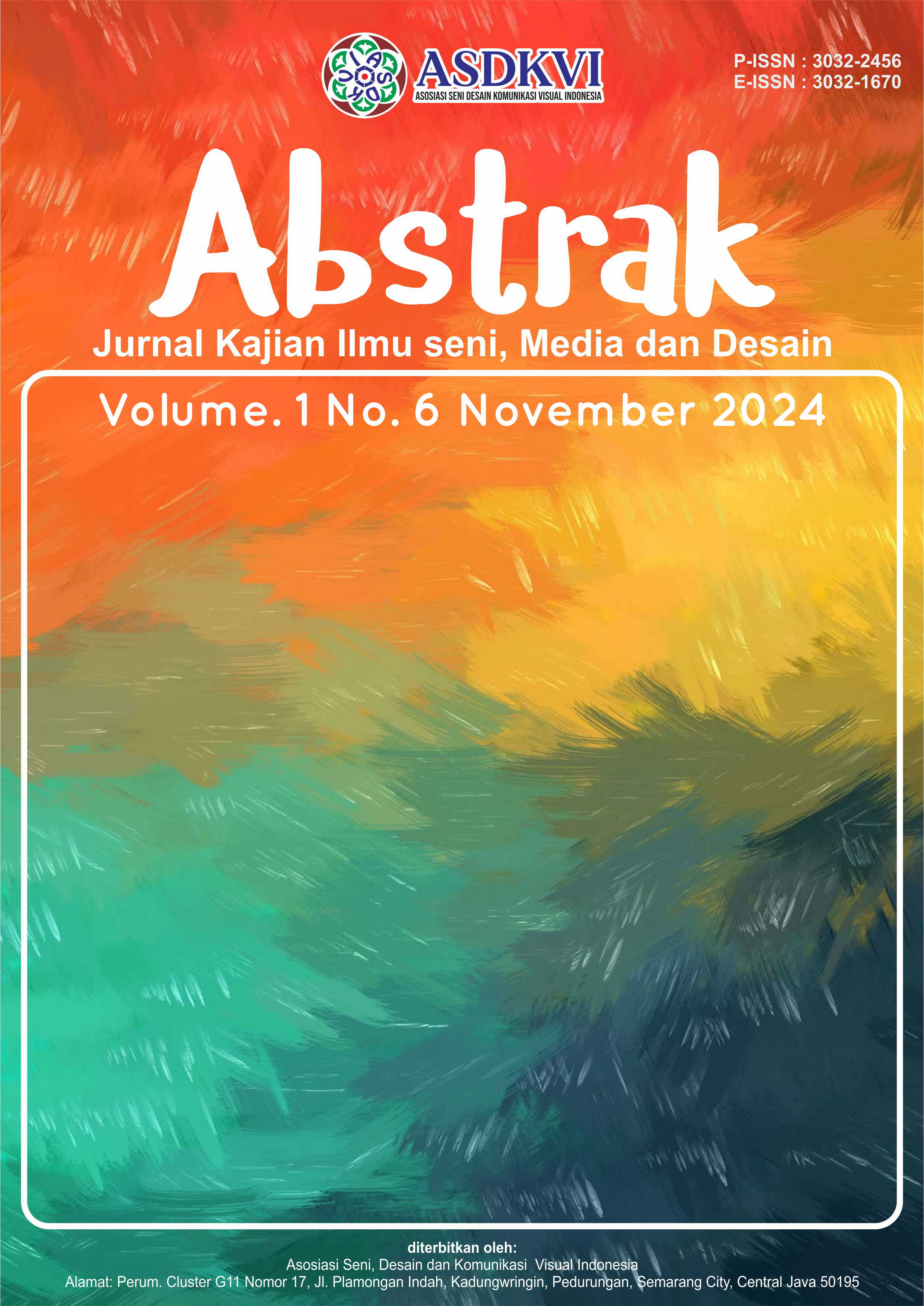Koreografi Tari Piring Galuak di Sanggar Seni Pinang Sinawa Kenagarian Taratak Kecamatan Sutera Kabupaten Pesisir Selatan
DOI:
https://doi.org/10.62383/abstrak.v1i6.401Keywords:
Choreography, Piring Galuak Dance, The Art of Sinawa PinangAbstract
This study aims to describe and analyze the Choreography of the Galuak Plate Dance at the Pinang Sinawa Kenagarian Taratak Art Studio, Sutera District, South Pesisir Regency. This type of research is qualitative research using a descriptive method. The research instrument is the researcher himself and is assisted by supporting instruments such as stationery and mobile phones. Data were collected through literature studies, observations, interviews and documentation. The steps of analyzing data are collecting data, describing data and inferring data. The results of the study show that the galuak plate dance has 3 parts, namely the beginning as the opening of the dance, the middle part, and the final part as the climax. In this galuak plate dance, there are elements of dance composition consisting of; movement, floor design, group composition, top design, dancers, music design, costumes and makeup and props. The movements worked on by the choreographer describe the daily life of the Kenagarian Taratatak community. This dance work also looks very interesting with various floor patterns and group compositions so that the audience does not get bored in watching the performance and the various dancers who master soft movements and strong movements. The costumes used in the plate dance are simple costumes. This galuak plate dance raises the theme of the community's gratitude for the harvest. The music that accompanies the dancers' movements uses a tempo that is initially slow and rises to the end with a singing song. The properties used in the galuak plate dance are plates and shells.References
Atikoh, A., & Cahyono, A. (2018). Proses Garap Koreografi Tari Rumeksa di Sanggar Tari Dharmo Yuwono Kabupaten Banyumas. Jurnal Seni Tari, 7(2), 66-74.
Hadi, Sumandiyo. (2007). Kajian Tari Teks dan Konteks. Yogyakarta: Pustaka book Publisher,.
Hadi, Sumandyo. (2011). Koreografi Bentuk Isi Teknik. Yogyakarta: Cipta Media
Hadi, Sumandyo. 1996). Aspek-Aspek Dasar Koreografi Kelompok. Yogyakarta: Manthili Yogyakarta
Jazuli, M. (1994). Telaah Teoritis Seni. Semarang: Ikip Press Semarang
Moleong, Lexy J. (2012).Metodologi Penelitian Kualitatif. Bandung: PT Remaja. Rosdakarya.
Nurfiana, M., & Nerosti, N. (2020). Tari Cangget Pilangan Di Daerah Abung Selatan Kabupaten Lampung Utara: Tinjauan Koreografi. Jurnal Sendratasik, 10(1), 271-278.
Salim dan Rahim Noer. (2008). Sembilan Tari Wajib Melayu, Medan: LP
Setiawati, S. (2008). Proses Pembelajaran Dalam Pendidikan Kesehatan. (A. Wijaya, Ed.) (1st ed.). Jakarta: Trans Info Media.
Soedarsono. (1999). Seni Pertunjukan Indonesia dan Pariwisata. Yogyakarta. :Social Agency
Sugiyono. (2011). Metode Penelitian Kuantitatif, Kualitatif dan R&D. Bandung: Alfabeta.
Sugiyono. (2014). Metode Penelitian Pendidikan Pendekatan Kuantitatif,. Kualitatif, dan R&D. Bandung: Alfabeta.
Sumardjo, Jakob. (2000). Filsafat Seni. Bandung : ITB. Tabrani
Surya, W. K., & Nerosti, N. (2021). Eksistensi Tari Andun Dalam Upacara Adat Perkawinan Di Kecamatan Seluma Kabupaten Seluma Provinsi Bengkulu. Jurnal Sendratasik, 10(4), 51-60.
Widyastutieningrum, Sri Rochana, dan Dwi Wahyudiarto. (2014). Pengantar. Koreografi. Surakarta: ISI Press
Downloads
Published
How to Cite
Issue
Section
License
Copyright (c) 2024 Abstrak : Jurnal Kajian Ilmu seni, Media dan Desain

This work is licensed under a Creative Commons Attribution-ShareAlike 4.0 International License.





